


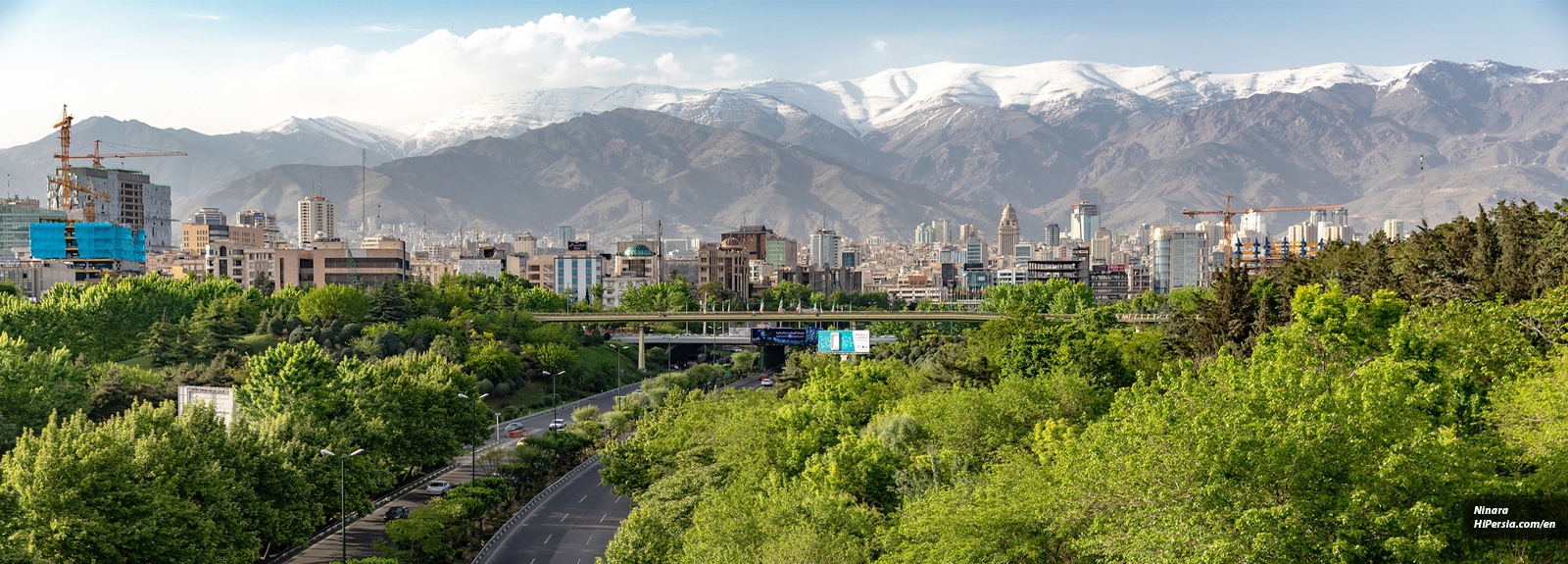
There are a lot of things to do in Tehran such as historic palaces, bazaar, museums and there is more to see and experience rather than we write in some paragraphs.
Hit the highlights of Tehran in 48 hours. View the spectacular museums and explore the magnificent palaces and amazed by the long history of Tehran. Tehran as capital of Iran, has witnessed many events and has a long history. Some evidences prove that Tehran is an ancient city too. For instant, the skeleton of 7000-year-old lady of Tehran and the discovered Potteries.
So, we are planning to show you the Tehran’s most visited tourist attractions in two energetic days.
Visit: Golestan Palace, Grand Bazaar, Imam Mosque (Shah Mosque), National Garden, National Museum of Iran, 30th Tir Street, Abgineh Museum and National Jewelry Museum.
The adventure starts with one of the historic monuments of the city. Step back in time with a visit to the Golestan Palace. This exquisite complex is one of the UNESCO World Heritage Sites that located in the vicinity of the Grand Bazaar. A beautiful garden, fountain pools, a charming throne hall, and many other sections make it a top choice destination in Tehran. We visit the Reception Hall (Talar Salam), Royal Garden, Marble Throne (Eyvan Takhte-e-Marmar), and The Badgir (wind catcher).

Note: It takes at least two hours to visit this palace completely, so set your visiting hours according to the museum's working hours.
The Grand Bazaar is the most fantastic shopping adventure in the world, where you can find many things from delicious Persian dishes to antiquities. Your guide expert at carpets, Kilims, Jewelry, antiquities, and leather, will assist you to a store where the best quality handmade rugs are sold for the lowest price, and will take you to the most reputable leather shop, the most decent antique store, and to a store where you can purchase your jewelry with no doubt.
Note: The Grand Bazaar of Tehran closes on Fridays and official holidays.

Experience the best Iranian dishes in Sharaf al-Islam Restaurant in the heart of the Grand Bazaar of Tehran, in the yard of the Imam Mosque. It’s undoubtedly one of the delightful moments of your journey to Tehran when a tasty dish will be served, especially after a long shopping expedition in the bazaar. It’s crowded and there is a queue to wait to be served, but the service is quick and without frills. This restaurant is open every day from 11 AM to 3:50 PM except Fridays and official holidays.

Imam Mosque is one of the most famous mosques in Tehran, which is located in the heart of the Grand Bazaar and is one of the remnants of Fath Ali Shah Qajar. The history of this mosque dates back about 180 years ago, and the minarets and its clock were added in the Nasir al-Din Shah era. It is known as the Shah Mosque and the Soltani mosque as well.
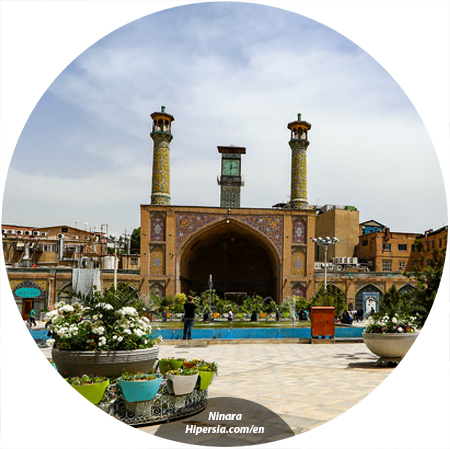
The National Garden is one of the symbols of Tehran, and it is visited by many tourists every day. This valuable monument was made at the beginning of this century on Reza’s orders. The picture of the 1921 Persian coup d'état, the angels of victory, and the soldiers of the Persian Cossack are displayed on the tills.

The National Museum is one of the main tourist attractions of Tehran, that many historical objects from various times. This museum was opened in 1937 in two complexes, including the Museum of Ancient Iran and the Museum of the Islamic Era. Furthermore, it’s the oldest, the largest, and the richest museum in Iran. The collection includes ceramics, pottery, stone figures, and carvings, mostly taken from excavations at Persepolis, Ismailabad (near Qazvin), Shush, Rey, and Turang Tappeh.

Right next to the National Museum, there is a paved street that has a special atmosphere. There are various cafes and restaurants on the street, which is a great place to relax and have a cup of tea or coffee. Of course, the smell of food on this street brings everyone to its side. now a days, 30th Tir Street has been replaced by Bob Homayoun Street which is less than 2 minuets walking from 30th Tir street.

Visiting the Abgineh Museum is optional. You can visit this museum, provided that your speed is high on previous attractions. This Museum, located at 30th Tir Street, and home to interesting antique crafts, including the unique collections of glassblowing arts in Iran. If you are interested in knowing how ancient people made them, it is the best chance.

Visiting the National Jewelry Museum is optional. You can visit this museum, provided that your speed is high on previous attractions. This museum is housed within the Central Bank of the Islamic Republic of Iran, which is a collection of the most expensive jewels in the world, collected over centuries.

Visit: Carpet Museum, Sa'dabad Complex, Tajrish Bazaar, Baghe Ferdows, and Tabiat Bridge
The Carpet Museum is one of Tehran's special museums, which houses exquisite and historic rugs. This museum is located in the northern part of Laleh Park, in a beautifully designed building, which was inspired by the carpet loom.
Note: Photography without a flash in this museum is free.
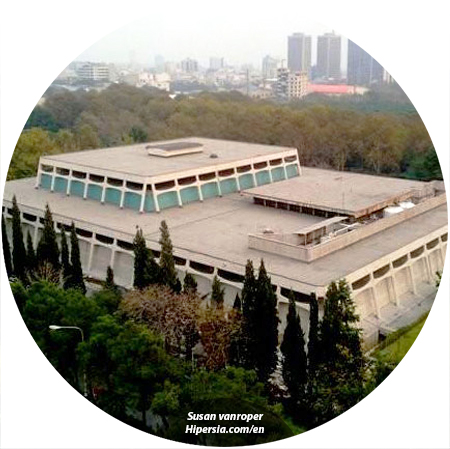
Sa'ad Abad Complex is one of the tourist sights of Tehran, which is located at the foot of the Alborz mountain range in the northernmost area of Tehran, and Tajrish Square is easily accessible from the south. You will visit many magnificent palaces that date back to the Qajar and Pahlavi dynasties in this complex. In addition to the history, this complex is the house of Platanus trees, which makes a rejuvenating environment.

After exploring the Iran Carpet Museum and Sa'dabad Complex, it’s time to have some delicious food. Your tour guide takes you to Shemroon Kabab Restaurant, right next to the Tajrish Square. This restaurant offers a list of mouth-watering dishes, especially Kebab Koobideh.

Enjoy trying another traditional food in the surrounding restaurant of Tajrish Square. We highly recommend having Ash (a combination of vegetables and beans that looks like soup) and Haleem (It includes wheat or barley, and sometimes meat and/or lentils) in Seyyed Mehdi Restaurant, whichis located in the southeast of Tajrish Square.
Tajrish Bazaar is one of the must-see destinations in Tehran. Due to its proximity to Darband, the palaces of Sa'dabad and Niavaran, and adjacent to the shrine of Imamzadeh Saleh (AS), every day hosts a large number of domestic and foreign tourists. In this bazaar, you will find a variety of handicrafts such as Termeh (It is a type of Iranian handwoven cloth) and Yazd Messi (coppery) dishes and Laljin pottery, as well as Trail mix, sweets, saffron, spices, pickles, and fruits. Iranians who have emigrated abroad have always mentioned the Tajrish Bazaar as one of the most memorable parts of northern Tehran.

Baghe Ferdows is one of the old gardens and mansions in Tehran that is located in the northern part of the Valiasr Street. Today, the mansion of this garden has been changed into the Cinema Museum. So, it’s the best opportunity to explore the history of Iranian Cinema while you enjoy walking through the soaring trees and streams.
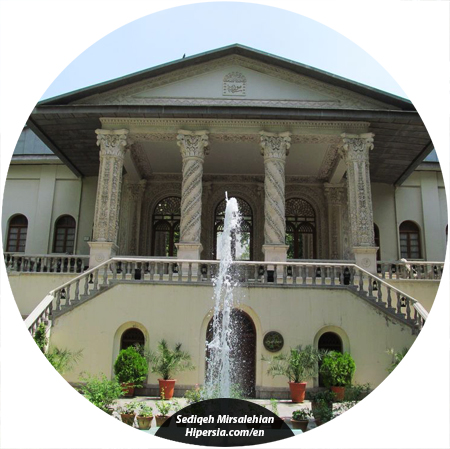
The garden atmosphere and the Cinema Museum are so spectacular and attractive that everyone will enjoy visiting them. Relax for many hours in cozy and quiet cafes in this garden, including Cinema Café and Viuna Café.

You can buy some traditional handicrafts such as ornaments, tablecloths, and cushions from Bahara Gallery ,that located on the right side of the mansion.

The Tabiat Bridge is known as one of the symbols of Tehran that provides a unique view of the city. This bridge is a three-story bridge in the Abbas Abad district that only pedestrians are allowed to cross, and no car is seen on it. It is located on the width of the Modares Highway and was built in order to provide a connection passage between Taleghani and Ab-o-Atash parks. Special lighting and unique features of the Tabiat Bridge attract many people, especially at night, and create memorable moments. The cafes and restaurants of this bridge are the best choices for creating delicious moments above the city.
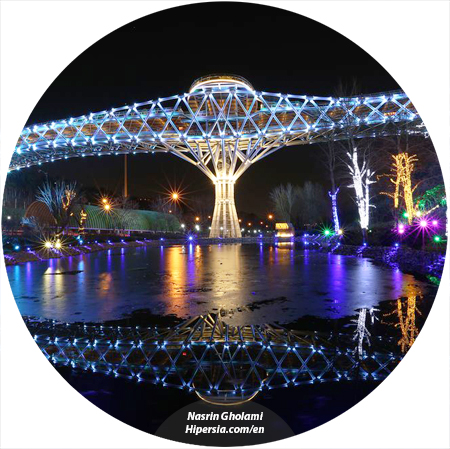






“Oh! Squander not this breath that Heaven hath lent thee, Nor make too sure another breath to borrow!’” Khayam